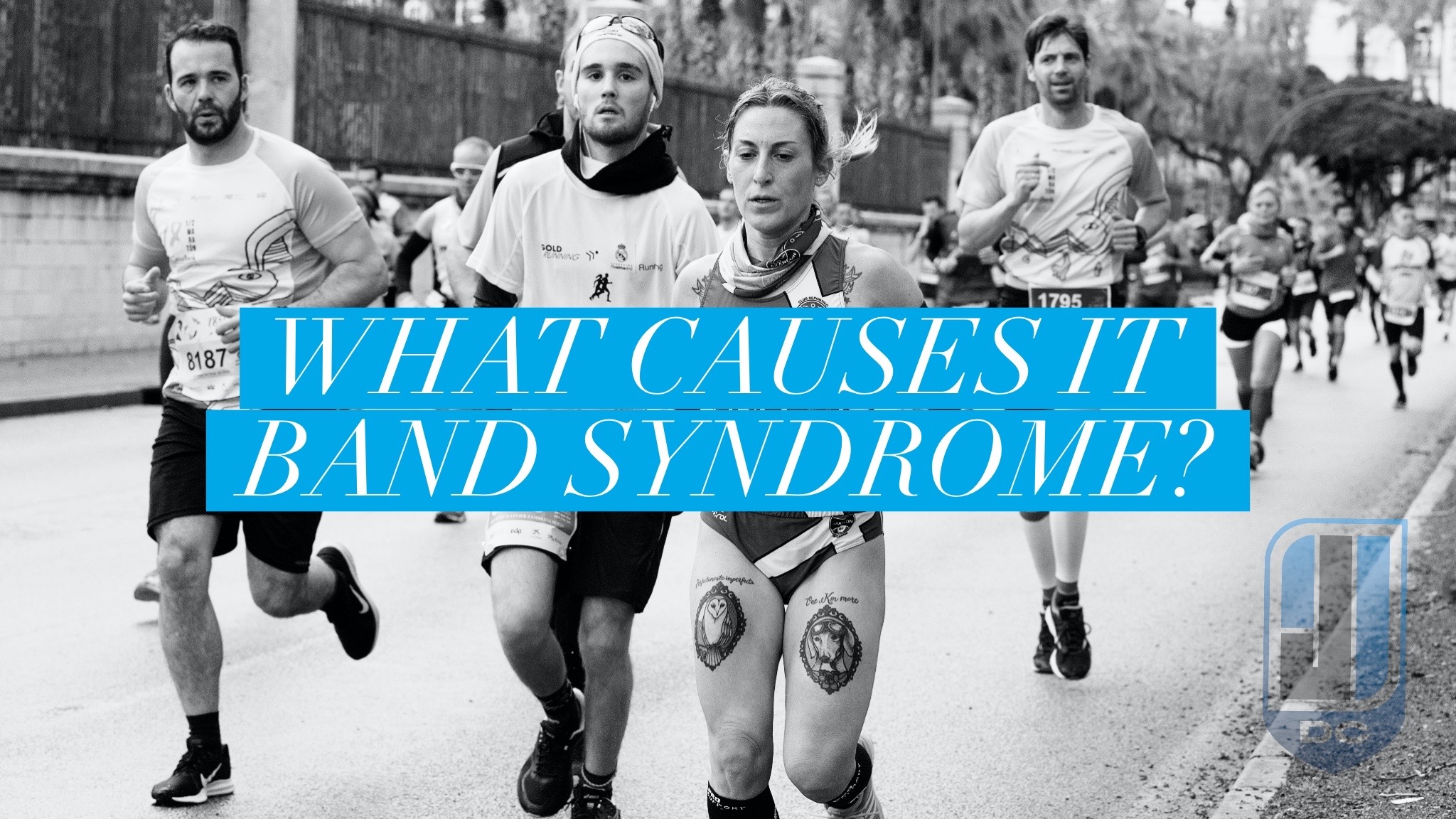
The most common question when treating IT band syndrome is “What causes IT band syndrome?” Would you be surprised if I told you that the cause of your knee pain is actually an issue with your hip? In this post I’ll use my years of experience as a chiropractor in Dumfries, VA to explain what causes IT band syndrome in detail.
If you’re looking for exercises for IT band syndrome or the best treatments for IT band syndrome, make sure you check out my other posts where I cover these topics in depth.
What Causes IT Band Syndrome?
Research hasn’t exactly pinpointed the exact cause of IT band syndrome, but in all likelihood, we know there are two possible causes of it:
- A highly innervated (full of lots of nerves) fat pad under the attachment of the IT band becomes compressed and irritated at the outside of your knee. Since this fat pad is very sensitive, when it’s irritated it sends lots of pain signals to your brain.
- The tendon and ligament of the IT band that attaches to the outside of your knee is irritated. This happens from repetitive movements; the most common movement is running. As the tissue is trying to heal, it’s not able to heal well and undergoes a vicious cycle of failed healing.
Either one of these issues can lead to inflammation, pain, and swelling on the outside of the knee. I would propose that a combination of these two processes is what causes IT band syndrome. No matter the cause, the good news is there is an effective and simple treatment for IT band syndrome (more on that later.)
What DOES NOT Cause IT Band Syndrome?
I can tell you for certain what DOES NOT cause IT band syndrome – a “tight” IT band. In fact, the IT band can’t even get tight because it doesn’t contract like a normal muscle does. The IT band can only contract 2% at maximum.
If the IT band isn’t a muscle, then what is it? It’s actually a long flat tendon that covers the outside of your hip and thigh, also extending to the outside of the knee. Technically a tendon is part of a muscle, but usually when we think of muscle, we think of the muscle belly (the part that contracts.)
The next time you feel like your IT band is tight, remember it’s not. What you’re probably feeling instead is that the hip muscles are pulling the IT band tight against your thigh.
Why Your HIP Problem is Causing IT Band Syndrome
You may be confused as to why your hip problem is causing IT band syndrome, but let me explain in simple terms…
The long flat tendon, “IT Band”, is connected to two muscles on the outside of your hip:
- The gluteus maximus muscle
- The tensor fasciae Latae (TFL) muscle.
Depending on the position of your leg, these two muscles alternate placing tension on the IT band. When your knee is straight or only slightly bent, most tension is in the TFL muscle which pulls in the front portion of the IT band on the outside of your knee. When the leg is bent, the gluteus predominates, and tension grows in the back part of your IT band on the outside of your knee.
IT band syndrome begins when these two muscles are imbalanced, overtrained, undertrained, or generally “dysfunctional.” What does a dysfunctional muscle feel like? You may describe it as tightness, pain, or weakness. It could also feel like you have a weird gait, catching, or unsmooth movement of the hip.
What Leads to IT Band Syndrome?
Anyone can get IT band syndrome, but it’s definitely more common in certain groups of people. There are a few common things I see in patients that may lead to this condition.
Based on my experience, here are some factors that can lead to IT band syndrome:
- Hip tightness, especially in the TFL muscle.
- High mileage running
- Running on a circular track or consistently uneven surface.
- Sports when you bend your hip and knee repetitively and against resistance, like cycling.
- Quad weakness or hamstring weakness
- Weakness in the muscles that bring your leg to the side, which then cause the thigh to drift inward and the knee to rotate inward resulting in poor gait.
- High foot arches and having footwear that doesn’t provide support for high arches.
You may have one or a few of these risk factors but remember that doesn’t always mean your knee pain is from IT band syndrome. It’s important to see a chiropractor or other doctor who’s familiar with evaluating on treating this condition. Seeing a doctor is important because there are other conditions that can mimic it – knee meniscus injury, arthritis, stress fracture, patellofemoral pain syndrome, LCL sprain, and hamstring tendinopathy.
What’s The Best Treatment for IT Band Syndrome?
The best treatment for IT band syndrome is conservative care, like chiropractic care or PT.
There is a high correlation between weak muscles in your hip (called hip abductors) and IT band syndrome. Strengthening of hip abductor muscles and other conservative care (like chiropractic care) have great results. 44% of IT band syndrome patients resolve in 2 months and 92% resolve in 6 months with these treatments.
Make sure you check out my other posts where I discuss treatment for IT band syndrome that you can do at home. I also cover the treatments I use in my Dumfries chiropractic office for IT band syndrome. Lastly, I explain how these treatments work to recover from IT band syndrome.
As always, feel free to reach out if you have any questions about IT band syndrome or any other conditions, you’d like me to cover.

Jason Williams DC is a licensed Doctor of Chiropractic with Physical Therapy Modality and Acupuncture privileges. He is a chiropractor in Dumfries, VA at Sentara Therapy Center. Dr. Williams’ clinical expertise is in the evaluation, treatment, and rehabilitation of neuro-musculoskeletal conditions. Specific focuses include spinal, extremity, and sports-related complaints. He brings a patient-first attitude to his treatments and is a proponent of evidence-based and integrative care. See more content and his contact info here.
The opinions and views are mine personally, and do not necessarily reflect the views of others in the profession, my employer, or organizations that I belong to.
